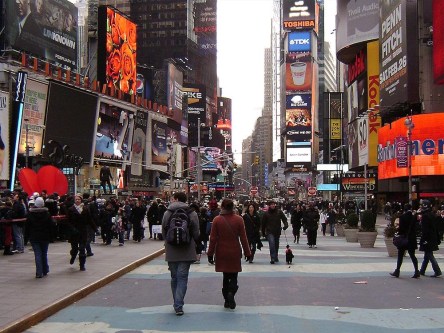As the United States shifts from its 20th century car-centric automotive industry and further into the 21st century, cities around the country are beginning to step into the trend of walkability. Large, metropolitan cities are seeing a decrease in the number of cars, which makes room for bigger sidewalks and more pedestrians. Studies show that there are a multitude of benefits that come along with increasing a city’s walkability. From bettering your personal health, to contributing to bettering the city’s economy and infrastructure, to decreasing global warming, the wide range of positives is causing the popularity of this trend to take off. Increasing Physical and Mental Health Many people in metropolitan areas live very sedentary lives. They wake up, drive to work, and sit at their desks for hours before driving home for the day. Rinse and repeat. Physical inactivity can account for up to 10% of all deaths from noncommunicable diseases. With the implementation of compact and walkable distances, people can increase the amount of activity in their daily lives, leading to overall healthier lifestyles. Research shows that walking just 30 minutes a day is linked to an 18 percent decrease in heart disease. Sedentary lifestyles are often coupled with low levels of daily interaction. If you drive straight to work alone every day, social interactions would not be necessary. Walkable streets and areas can foster interactions that would not have taken place normally, such as striking up a conversation at a community park or meeting somebody at a coffee shop along a busy street. These small social interactions can contribute to a larger sense of community, which can in turn increase the overall positive mental health for citizens. Fostering a Vibrant and Active City A bustling city filled with pedestrians means a...
Cities Take the Lead
Combating Climate Change
Treaties and international accords can certainly trigger change, but most of the time the real action happens on the ground. Grassroots campaigns and public support can often pick up momentum, powered by the actions of small groups and individuals committed to a cause. As a result, when it comes to global issues like sustainability, renewable energy and climate change, cities have to power to make a big difference. “There is no single solution for solving global climate change,” declares the C40 Cities organization, “but cities have the ability, capacity and will to lead.” “We believe that a global future lies in urban innovation and action,” the group states on their website. “As the majority of future humans will live in cities, it just makes sense that our solution to climate change will reside there too. A Costly Climate While images of starving polar bears and collapsing glaciers have come to symbolize the environmental impact of a warming planet, the economic effects felt by cities are equally significant. According to a new study published in Nature Climate Change, large metrolpolitan areas experience the economic consequences of climate change at a rate three times higher than the less populated regions of the world. Some of the costs are the result of the “urban heat island effect.” Because cities often include huge swathes of land covered in pavement and concrete buildings, the heat those materials absorb is emanated back out into the atmosphere, resulting in temperature increases as high as 19˚F. Researchers have dubbed Los Angeles an “urban heat archipelago,” for example, because urban sprawl has led to several “islands” spread out across the Los Angeles Basin. “It’s like a whole chain of urban heat islands that run into each other,” explained Gina Solomon, Deputy Secretary for Science...


